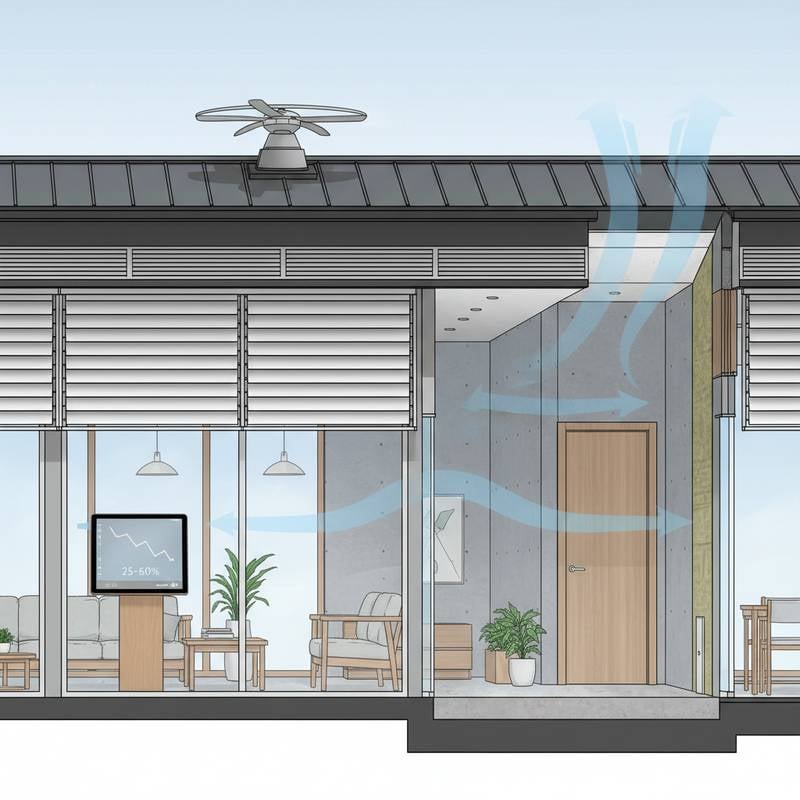Introduction to Mushroom-Based Insulation
Homeowners seek effective ways to lower energy bills while embracing sustainable practices. Mushroom-based insulation emerges as a promising solution. Derived from mycelium, the root structure of mushrooms, this material offers superior thermal performance without the environmental drawbacks of traditional options.
Mycelium insulation binds agricultural waste, such as corn stalks or hemp hurds, into dense panels or blocks. These grow in molds over days, creating a lightweight yet durable product. Unlike foam or fiberglass, it requires minimal energy to produce and decomposes naturally at the end of its life cycle.
This innovation addresses rising cooling demands in warmer climates. By enhancing insulation value, it reduces reliance on air conditioning units. Studies indicate potential savings of up to 50 percent on cooling costs, depending on home size and climate zone.
Key Benefits for Energy Efficiency
The primary advantage lies in its high R-value, a measure of thermal resistance. Mycelium panels achieve R-values comparable to synthetic insulators, often between R-3.5 and R-5 per inch. This efficiency stems from the material's cellular structure, which traps air pockets to block heat transfer.
In hot summers, this translates to cooler interiors without constant HVAC operation. Homeowners report consistent indoor temperatures, even during peak heat. The result includes lower utility bills and reduced wear on cooling systems.
Beyond cost savings, the material resists moisture, preventing mold growth common in humid areas. Its natural composition avoids off-gassing of volatile organic compounds, leading to improved indoor air quality. Families with allergies or respiratory concerns benefit from this cleaner environment.
Fire safety represents another strength. Mycelium insulation chars rather than burns, slowing flame spread. Certifications confirm its low flammability, making it suitable for walls, attics, and floors.
Environmental and Sustainability Advantages
Traditional insulation contributes to landfill waste and high carbon emissions during manufacturing. Mycelium-based alternatives shift this paradigm. Production utilizes renewable resources and occurs at ambient temperatures, slashing energy use by over 90 percent compared to foam alternatives.
The process supports circular economies by repurposing farm byproducts. Once installed, the insulation sequesters carbon, acting as a sink for atmospheric CO2. At disposal, it biodegrades in soil, returning nutrients without harm.
For eco-conscious builders, this material aligns with green building standards. It qualifies for LEED credits and meets criteria for low-impact materials. Communities adopting it contribute to broader goals of reducing fossil fuel dependence.
How Mushroom Insulation Works
Mycelium grows as a network of thread-like hyphae that bind substrates together. Manufacturers inoculate organic matter with fungal spores in controlled environments. Over one to two weeks, the mycelium colonizes the material, forming a solid mass ready for drying and cutting.
The final product resembles compressed cork or lightweight foam. Panels fit standard framing, while loose-fill versions suit attics. Its flexibility allows custom shaping for irregular spaces, ensuring comprehensive coverage.
Thermal performance excels in preventing convective heat loss. The material's density minimizes air infiltration, a common culprit in energy waste. Paired with proper sealing, it maximizes efficiency across seasons, aiding both cooling and heating.
Installation Options: DIY and Professional
For DIY enthusiasts, mycelium insulation arrives in user-friendly kits. Basic tools include utility knives for cutting and gloves for handling. Start by measuring wall cavities or attic spaces, then insert panels snugly between studs.
Secure with minimal fasteners, as the material's rigidity holds shape. For attics, spread loose fill to recommended depths, typically 10 to 15 inches for optimal R-value. Ventilation remains crucial; ensure soffit and ridge vents function to avoid trapped moisture.
Professional installation guarantees precision, especially in complex retrofits. Contractors assess home layouts and recommend thicknesses based on local codes. Expect costs ranging from $1.50 to $3 per square foot, lower than many premium synthetics over time due to savings.
Safety protocols apply universally. Wear masks during cutting to avoid dust, though the material poses low health risks. Post-installation, monitor for settling, though mycelium maintains form better than cellulose options.
Real-World Applications and Case Studies
In residential settings, mycelium insulation transforms older homes. A retrofit in a Texas suburb yielded 48 percent cooling savings, per utility data. Residents noted quieter operation from reduced AC cycling and fresher air throughout the house.
Commercial uses expand its reach. Office buildings incorporate it for energy-compliant designs. One Midwest project cut operational costs by 35 percent while earning sustainability certifications.
Innovators experiment with integrations, such as combining mycelium with phase-change materials for enhanced performance. These advancements promise even greater efficiency in future builds.
Long-Term Savings and Maintenance
Initial investment pays off quickly through energy reductions. In moderate climates, payback occurs within three to five years. Factor in rebates from utility programs or tax incentives for green upgrades to accelerate returns.
Maintenance proves straightforward. The material repels pests naturally, deterring insects and rodents. Periodic inspections check for damage, but its durability rivals long-lasting synthetics.
Over decades, it preserves home value by appealing to eco-savvy buyers. Insurance premiums may decrease due to fire resistance. Overall, it fosters resilient, comfortable living spaces.
Embracing a Cooler, Greener Future
Mushroom-based insulation redefines home efficiency with natural ingenuity. It delivers substantial cooling savings, superior comfort, and environmental stewardship. Homeowners ready to act find accessible paths to implementation, whether through self-guided projects or expert guidance.
This shift not only trims expenses but elevates quality of life. Consider assessing your home's needs today. The benefits extend far beyond immediate savings, nurturing sustainable habits for generations.










